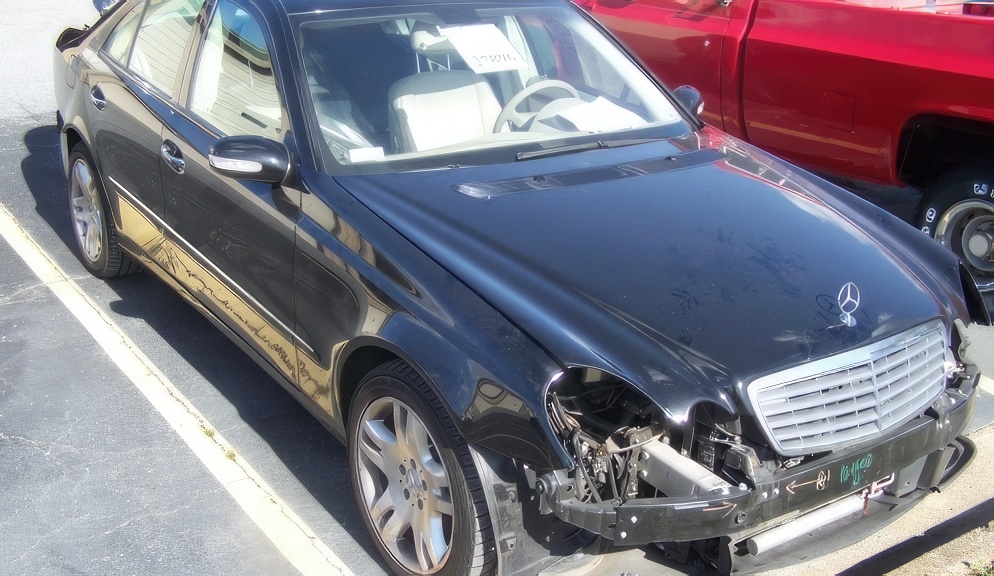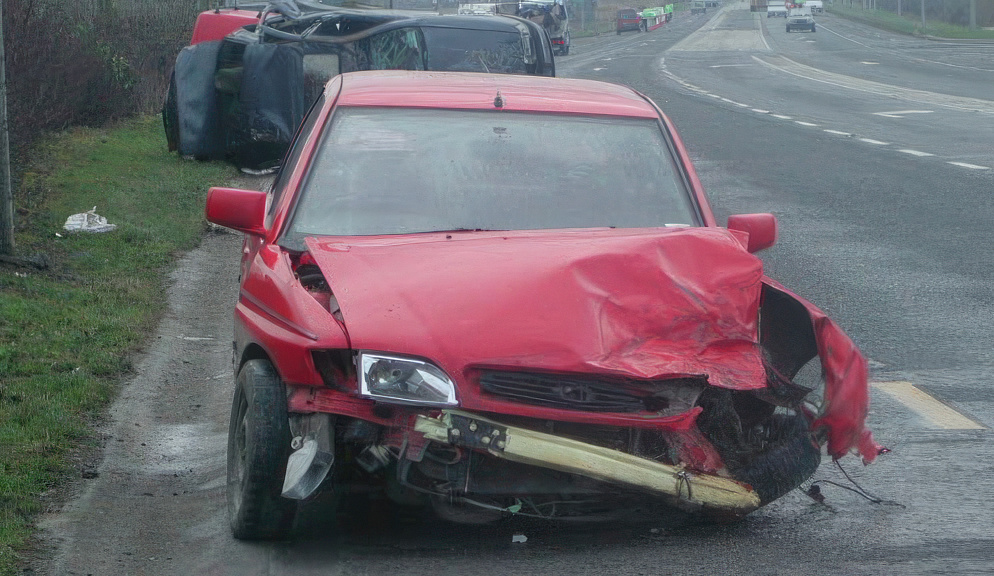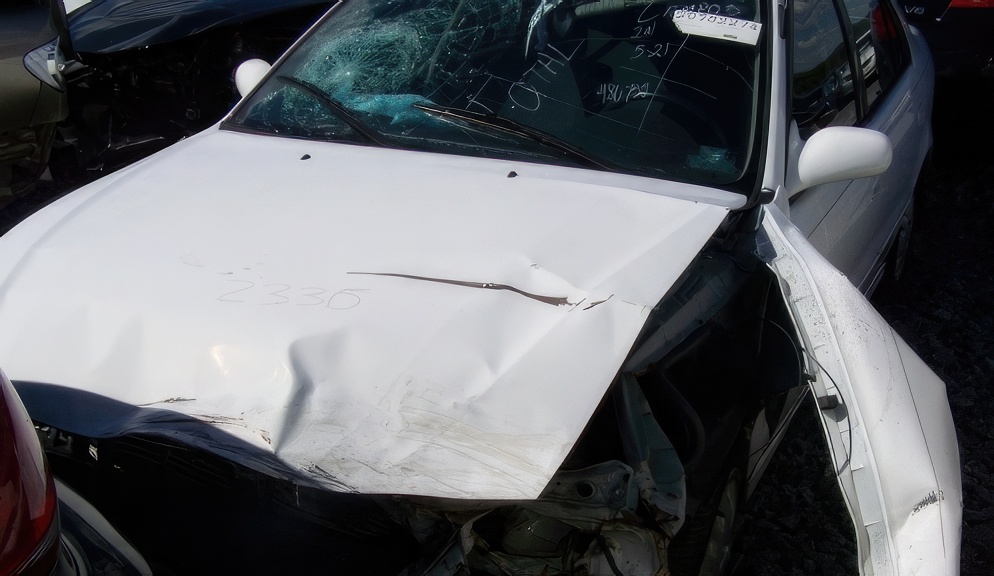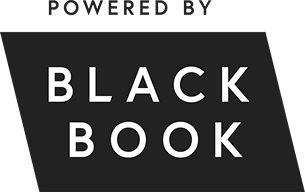Uncovering the Layers: Diminished Value Assessment

In the wide spectrum of vehicle ownership, accidents are the unwelcomed visitors that leave behind a trail of financial implications. One such implication is the concept of diminished value, a term that encapsulates the reduction in a vehicle’s market value post-accident. Whether the accident is a minor fender bender or a major collision, the fact remains that the vehicle’s worth on the market takes a hit. The aftermath of an accident leaves a permanent record on the vehicle’s history, which potential buyers view with a lens of skepticism, even if the repairs are top-notch. Understanding diminished value and its assessment is a crucial aspect for vehicle owners, potential buyers, and insurance entities alike, as it provides a realistic picture of the vehicle’s worth post-accident.
Delving into the realm of diminished value assessment unveils a complex landscape filled with varying methodologies, legal intricacies, and insurance implications. The journey through this landscape begins with an acknowledgment of the existence of diminished value and its financial impact.
This acknowledgment is pivotal as it sets the stage for either pursuing a diminished value claim or understanding the depreciation in the vehicle’s resale value.
The process of diminished value assessment is akin to peeling layers off an onion, each layer representing different facets like calculation methods, legal frameworks, insurance claims, and the role of professionals in this domain.
Objective of Diminished Value Assessment
The objective of diminished value assessment is to arrive at a fair and accurate representation of the vehicle’s market value post-accident. This assessment serves as the foundation for insurance claims, negotiations, and resale considerations. The methods employed for this assessment range from formula-based calculations, market surveys to professional appraisals. Each method, with its set of advantages and drawbacks, aims at providing a realistic picture of the diminished value, assisting vehicle owners in navigating through insurance claims and potential buyers in making informed decisions.
Journey Through Diminished Value Assessment
The road map through the terrain of diminished value assessment is laden with technical, legal, and financial waypoints. It’s a journey that requires a blend of knowledge, professional expertise, and a clear understanding of the legal and insurance frameworks governing diminished value. This article aims to serve as a guide, providing insights into the critical aspects of diminished value assessment, shedding light on the calculation methods, legal aspects, claims process, the role of professionals, and the impact on insurance and resale. As we delve deeper into each facet, the aim is to equip readers with a robust understanding, aiding them in making informed decisions in the realm of diminished value.
Navigating Through Diminished Value Calculation Methods
The first milestone in the journey of diminished value assessment is understanding its calculation methods. There are primarily three:
1. 17C Formula
The 17c Formula is often considered the starting point for many who find themselves at the crossroads of diminished value assessment post-vehicle accident. This formula derives its name from a specific line of a court case in Georgia, which over time, has evolved into a common method for calculating diminished value across various states. Although it offers a simplified approach towards understanding diminished value, its efficacy and accuracy have often been a topic of debate among professionals and claimants alike.
Originating from a court case, this formula is often the first stop for many. It’s a simple formula, but might not always reflect the actual diminished value.
At its core, the 17c Formula operates by a three-step process:
- Initially, it caps the diminished value at 10% of the vehicle’s pre-accident fair market value.
- Following this, it applies a damage modifier which ranges between 0 and 1, depending on the extent of the damage; the higher the damage, the higher the modifier.
- Lastly, it integrates a mileage modifier, which adjusts the diminished value based on the vehicle’s mileage. The formula thereby attempts to quantify the loss in value a vehicle incurs post-accident, in a structured, mathematical manner.
However, critics argue that the 17c Formula often falls short of capturing the true diminished value. The initial cap of 10% is seen as arbitrary and not reflective of the actual market conditions. Additionally, the formula does not account for other crucial factors such as the vehicle’s age, condition, or the market demand, which significantly impact the vehicle’s value post-accident. Moreover, the formula’s one-size-fits-all approach is often seen as its Achilles heel, providing a broad brushstroke in a matter that requires a finer, more nuanced analysis.
Despite its shortcomings, the 17c Formula continues to be used due to its simplicity and the precedent set in the legal domain. It provides a quick, albeit rough, estimate of the diminished value, which can be particularly useful for individuals who are new to the concept of diminished value. However, for a more accurate assessment, exploring other methods like professional appraisals or local market surveys is often recommended by experts in the field. Through a comprehensive understanding and application of various assessment methods, claimants are better positioned to recoup a fairer compensation for their loss in vehicle value post-accident.
2. Local Market Survey
The Local Market Survey method for assessing diminished value is a more grounded approach compared to formula-based calculations like the 17c Formula. This method dives into the real-world market conditions to provide a more accurate picture of a vehicle’s diminished value post-accident. By analyzing comparable vehicles’ prices within the local market—both pre and post-accident—a more precise diminished value can be ascertained. This method reflects the actual market dynamics and the genuine impact an accident has on a vehicle’s value, making it a favored choice among many experts and vehicle owners.
This method involves a thorough analysis of the local market to understand the price variations pre and post-accident.
A Local Market Survey starts with identifying comparable vehicles within the local market. These are vehicles of the same make, model, year, and similar mileage and condition as the subject vehicle. Gathering data on these comparable vehicles both before and after an accident provides a realistic baseline to determine the subject vehicle’s diminished value. This process, though more time-consuming than applying a formula, provides a robust foundation for a diminished value claim, grounded in real-time market conditions.
The intricacies of the Local Market Survey method require a more detailed understanding of the local automotive market. It’s here that the expertise of professionals can be invaluable. Professionals with experience in the local market can discern the subtle factors that may affect a vehicle’s value, such as seasonal demand fluctuations or the reputation of certain repair shops. Their nuanced understanding aids in crafting a more precise diminished value assessment, providing a stronger footing for negotiations with insurance companies.
The Local Market Survey method, while more demanding in terms of time and expertise, often pays off by yielding a more accurate diminished value, which can be crucial during insurance negotiations. It bridges the gap between theoretical calculations and real-world market conditions, ensuring a fair and realistic assessment of a vehicle’s diminished value. Engaging in a Local Market Survey is a step towards a more informed and equitable resolution of diminished value claims, safeguarding the interests of vehicle owners in the aftermath of an accident.
3. Professional Appraisal
The world of diminished value assessment can often seem like a labyrinth to the uninitiated. This is where the role of a professional appraiser becomes indispensable. Professional appraisers bring to the table a wealth of knowledge, expertise, and an objective lens through which the diminished value of a vehicle post-accident can be accurately assessed. Their meticulous approach ensures a thorough analysis, taking into account a multitude of factors that might affect the vehicle’s value, which formulaic or market-based methods may overlook.
Engaging professional appraisers for a detailed report can provide a more accurate picture of the diminished value.
The process of a professional appraisal begins with a comprehensive examination of the vehicle in question. This includes not just assessing the damage caused by the accident, but also evaluating the overall condition of the vehicle, its repair history, and other intrinsic factors like its make, model, age, and mileage. Additionally, professional appraisers often have access to advanced tools and databases which help in comparing the subject vehicle to similar vehicles in the market, thereby arriving at a more precise estimation of its diminished value.
Legal aspects often intertwine with diminished value assessment, and a professional appraiser’s expertise can be pivotal in navigating these waters. They are well-versed with the legal framework surrounding diminished value claims in different jurisdictions, and their appraisals are structured to stand up to legal scrutiny. This is especially crucial when negotiating with insurance companies or if the claim escalates to a legal dispute. The credibility and objectivity of a professional appraisal can significantly strengthen the case for a diminished value claim.
Engaging a professional appraiser for a diminished value assessment is an investment towards achieving a fair claim. While it may entail higher upfront costs compared to other methods, the accuracy, and credibility of a professional appraisal often translate to a more favorable outcome in diminished value claims. In the complex landscape of diminished value, having a professional appraiser by your side is akin to having a seasoned guide, illuminating the path towards a rightful claim and ensuring the vehicle’s true value is recognized and compensated.
Legal Landscape of Diminished Value
The legal landscape surrounding diminished value is a mosaic of differing laws and interpretations that vary significantly from one jurisdiction to another. Some states have well-defined statutes allowing claims for diminished value, while others tread a more restrictive path. Understanding the legal stance on diminished value in one’s respective state is the first step towards pursuing a claim. This legal framework sets the stage for the rights of the vehicle owner and the responsibilities of the insurance company in addressing the diminished value following an accident.
In states where diminished value claims are recognized, the law often outlines the criteria and the process for filing such claims. This may include the requisite documentation, the timeline within which the claim should be filed, and the method of calculation accepted for determining the diminished value. Furthermore, there might be specific provisions regarding the rights of the vehicle owner in case of a dispute, including the option to engage in alternative dispute resolution or to escalate the matter to court. Understanding these legal provisions is crucial as it shapes the pathway for asserting a diminished value claim.
However, the journey is not as straightforward in jurisdictions where the legal framework surrounding diminished value is either non-existent or ambiguous. In such cases, the precedent set by previous court rulings often plays a pivotal role. These precedents can serve as a guide for vehicle owners and legal practitioners in understanding the stance of the judiciary on diminished value claims. Moreover, they can offer insight into the arguments and evidence that may be considered compelling in asserting such claims.
The legal landscape of diminished value is complex, but with the right guidance, it’s navigable. Consulting with legal professionals who specialize in diminished value claims or insurance law can provide clarity and direction. They can help interpret the relevant laws and precedents, and assist in preparing and presenting a compelling case for a diminished value claim. In a realm where legal interpretations can significantly impact the outcome, professional legal advice is a beacon for those seeking to understand and assert their rights regarding diminished value.
Treading the Path of Diminished Value Claims
Embarking on the journey of filing a diminished value claim can often feel like stepping into a maze with a myriad of processes, legal jargon, and negotiations. However, with a structured approach and a clear understanding of the steps involved, this path can lead to rightful compensation for the loss in value your vehicle has endured post-accident. The first milestone in this journey is recognizing the existence of diminished value and its impact on your vehicle’s worth. This acknowledgement is the catalyst for initiating a claim and seeking the compensation you deserve.
The cornerstone of a solid diminished value claim is a precise and credible assessment of the diminished value. This assessment serves as the foundation for negotiations with the insurance company. Whether you choose to employ the 17c Formula, engage in a Local Market Survey, or enlist the services of a professional appraiser, ensuring the accuracy and credibility of the assessment is paramount. It’s advisable to gather all necessary documentation, such as repair bills, photographs of the damage, and the diminished value assessment report, as these documents substantiate your claim and provide a clear picture of the loss incurred.
Navigating the legal intricacies is the next crucial phase. Understanding the legal provisions regarding diminished value claims in your jurisdiction provides a blueprint for how to structure your claim. It’s here that consulting with legal professionals can provide invaluable insights. They can guide you through the legal requirements, help in preparing a robust claim, and represent your interests during negotiations with the insurance company. In cases where negotiations reach a standstill, having legal representation ensures that your rights are vehemently defended, whether in alternative dispute resolution settings or in court.
The final stretch of this path is the negotiation with the insurance company. Armed with a solid diminished value assessment and legal guidance, engaging in negotiations is about reaching a fair settlement. It’s imperative to be well-prepared and patient, as negotiations can be lengthy and demanding. However, with the right resources and support, traversing the path of diminished value claims can lead to a successful resolution, ensuring you receive the rightful compensation for the diminished value your vehicle has suffered. The maze of diminished value claims, though complex, is surmountable with preparation, professional guidance, and a clear understanding of the process and legal landscape.
Professionals: Your Compass in Diminished Value Assessment
Navigating the complex waters of diminished value assessment can be a daunting task for the uninitiated. This is where the expertise of professionals in diminished value assessment becomes an indispensable asset. Professionals bring to the table a rich reservoir of knowledge, experience, and a nuanced understanding of the local automotive market and legal landscape. They act as a compass, providing direction and clarity in a domain that is fraught with complexities. Their expertise simplifies the process, ensuring that the vehicle owner is well-equipped to pursue a fair claim for the diminished value.
The process begins with:
- Meticulous analysis of the vehicle.
- Evaluating the extent of damage.
- Quality of repairs.
- Overall condition of the vehicle post-accident.
Professionals utilize advanced tools and methodologies to conduct a thorough assessment, capturing the true essence of the diminished value. Their approach goes beyond mere formulas, delving into the real-world market conditions, comparable sales, and the legal framework surrounding diminished value claims. The assessment provided by professionals is comprehensive and tailored to the specific circumstances of the case, reflecting a realistic picture of the diminished value.
Legal intricacies are often intertwined with diminished value assessments, and here again, the expertise of professionals shines through. They have a firm grasp of the legal provisions governing diminished value claims in different jurisdictions. Their assessments are structured to stand up to legal scrutiny, providing a robust foundation for negotiations with insurance companies or, if necessary, legal proceedings. Moreover, their established reputation and credibility lend weight to the diminished value assessment, significantly enhancing its acceptance and the likelihood of a favorable outcome.
Engaging professionals in the diminished value assessment is an investment towards ensuring a fair and accurate claim. While it may entail additional costs, the benefits often outweigh the expense. The precise and credible assessment provided by professionals, coupled with their guidance through the legal and negotiation processes, empowers the vehicle owner to assert their rights confidently. The professional’s expertise demystifies the complexities of diminished value assessment, providing a clear path towards achieving a rightful claim. In the quest for fair compensation for diminished value, professionals are the seasoned guides leading the way through the labyrinth of processes, negotiations, and legal hurdles.
Impact of Diminished Value on Insurance and Resale
The concept of diminished value casts a long shadow, not just on the immediate aftermath of a vehicle accident, but also on its future resale value and insurance premiums. The ripple effect of diminished value is multifaceted and understanding its impact is crucial for vehicle owners, prospective buyers, and insurance policyholders. At the heart of this impact is the perceived reliability and desirability of the vehicle post-accident, which significantly influences its market value and, by extension, its insurability.
The resale value of a vehicle is one of the most tangible manifestations of diminished value. Post-accident, the vehicle’s history carries the blemish of damage, which often leads to potential buyers being skeptical about its condition and reliability, even if repairs are carried out meticulously. This skepticism translates to a lower resale value, as buyers are likely to prefer vehicles without a history of accidents. The difference in the sale price of a vehicle with a clean history compared to one with an accident history reflects the monetary impact of diminished value on resale.
On the flip side, insurance premiums too feel the ripple effect of diminished value. While insurance policies are designed to restore the vehicle to its pre-accident condition, the inherent loss in value post-accident is a risk that insurance companies might account for in premium calculations. Some insurance companies may increase premiums following an accident claim, viewing the vehicle as a higher risk or to recoup the claim payout. Furthermore, the ability to claim diminished value itself could be influenced by the specifics of the insurance policy, which might have clauses pertaining to diminished value claims.
Navigating the interplay between diminished value, insurance, and resale requires a well-rounded understanding of each domain. Being informed about the legal landscape of diminished value, the nuances of insurance policies regarding accident claims and diminished value, and the market dynamics affecting resale can equip vehicle owners and buyers with the knowledge to make informed decisions. This understanding also empowers them during negotiations, whether it’s with insurance companies for a fair premium or with potential buyers for a fair resale price.





